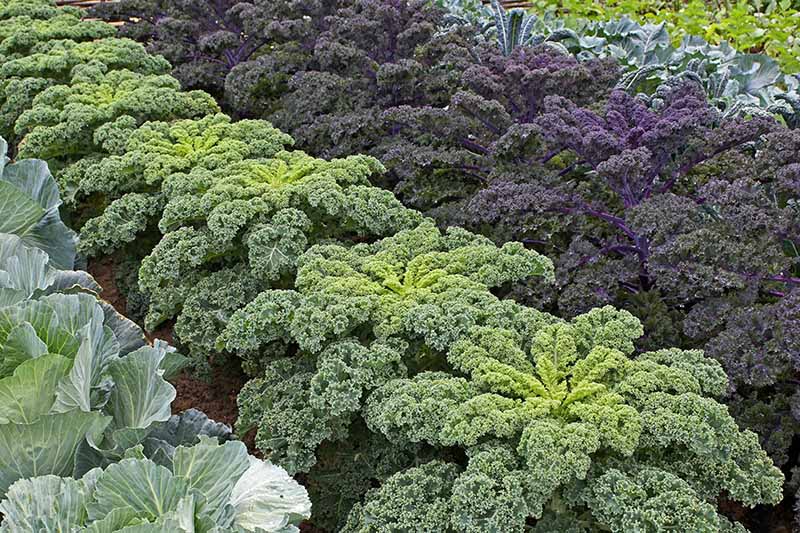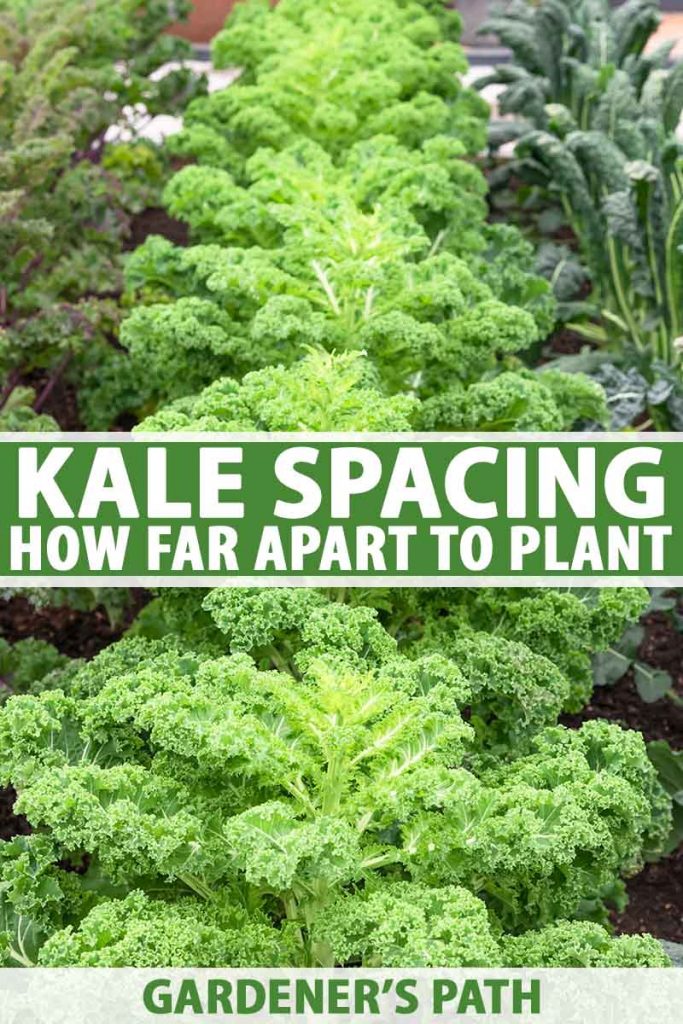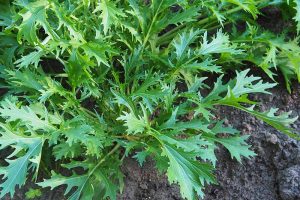When you plan your cool season vegetable garden, you’ll certainly want to include kale, the versatile star of many a plant-based meal – from salads and smoothies to stir fries and stews.
But to harvest the most abundant and delicious leafy greens from this member of the Brassicaceae family, it’s important to provide adequate spacing between these leafy veggies.
What exactly are these magic numbers, the number of inches between plants that will encourage your crop to thrive while still allowing you to make efficient use of your garden’s footprint?
Those magic numbers depend on a few different factors.
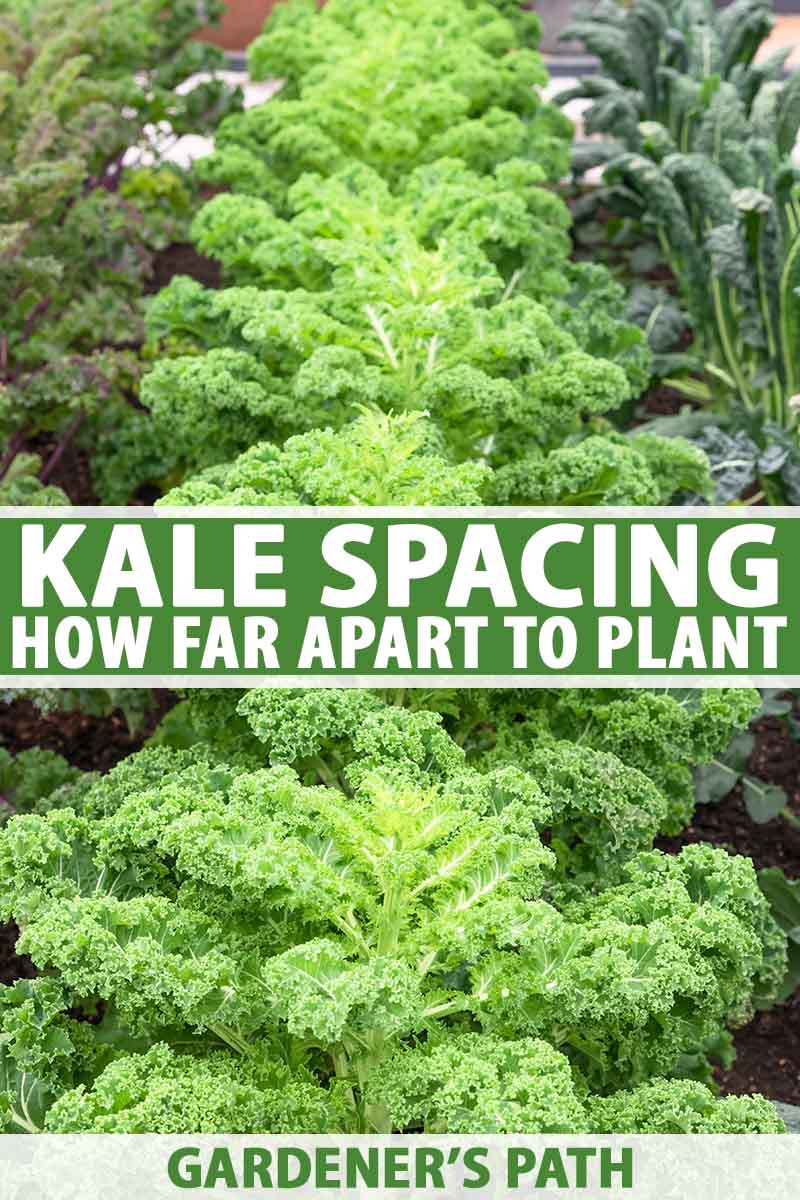
We link to vendors to help you find relevant products. If you buy from one of our links, we may earn a commission.
Are you planning on harvesting young leaves or large ones from this cruciferous crop? Will you be planting your leafy greens in rows, raised beds, or containers? And what varieties will you be growing?
Before we get started, you’ll want to answer these questions for yourself so that you can use the recommendations in this article for your particular situation – and decide what your own magic numbers are.
Here’s a quick overview of what I’ll cover:
What You’ll Learn
Why You Shouldn’t Crowd Kale
Before we get to deciphering the magic numbers, let’s remind ourselves why we are interested in properly spacing our kale plants in the first place.
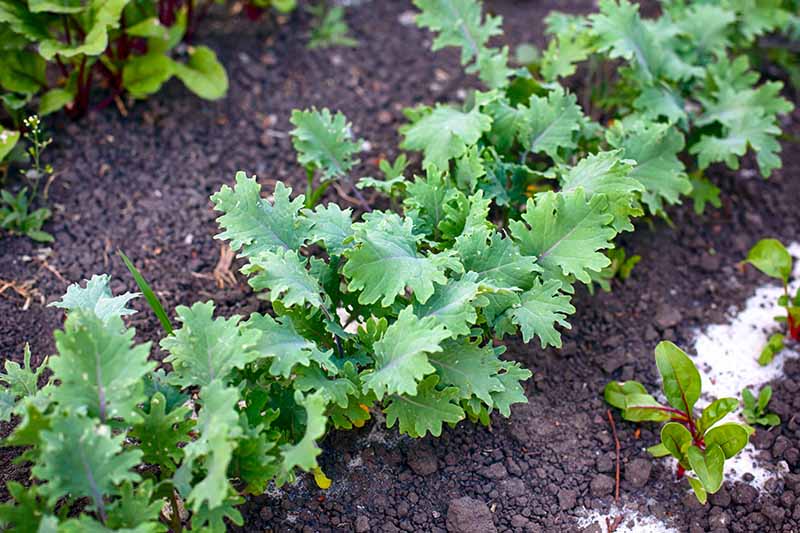
Planning for the right distance between these leafy greens can be the difference between a bountiful harvest – and a meager one.
Here’s why:
- Leaving enough room around your plants helps to ensure that the leaves get plenty of sun, resulting in healthy, thriving crops.
- When you can clearly identify each individual plant instead of picking through a mass of tangled leaves, it is much easier to harvest your greens properly.
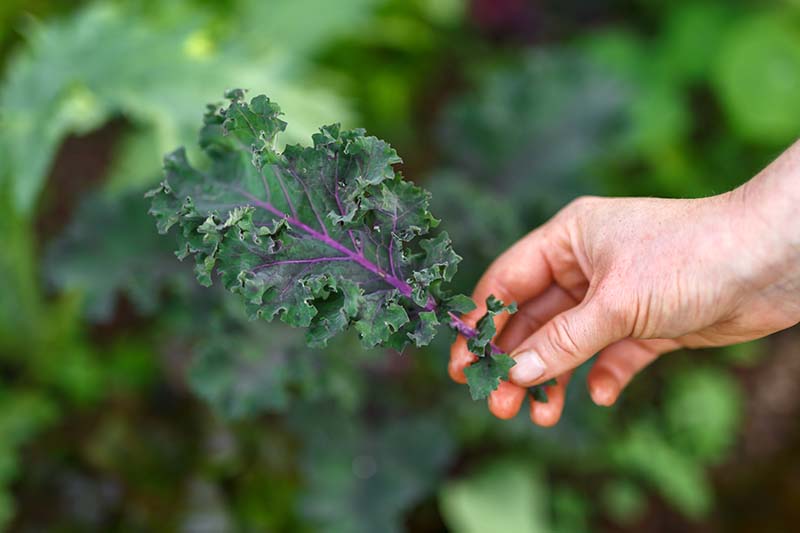
- Keeping these vegetables well-spaced instead of crowded makes it easier to inspect for cabbage worms and other pests.
- Ensuring good airflow around leaves helps ward off fungal infections, and makes it easier to spot the first signs of disease.
- If you do experience a disease outbreak, a little extra room between each plant will help you keep infected specimens isolated. This way you can quickly treat or remove them, and prevent the problem from spreading.
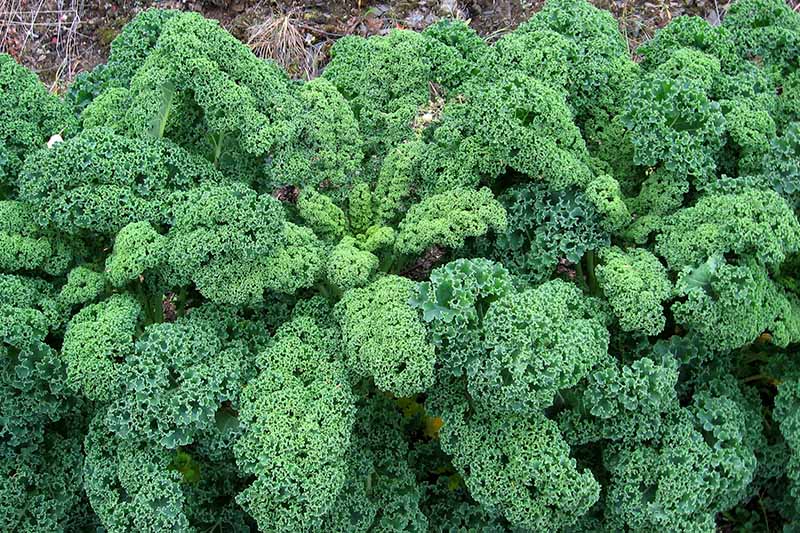
- Crowded veggies may compete with one another for nutrients and water, resulting in wilted greens.
- And finally, crowding does not increase your harvest. An article in the International Society for Horticultural Science journal by J. A. Chweya details a study he carried out on kale spacing and yield. The results? Widely spaced crops had a higher overall yield than ones that were planted close together.
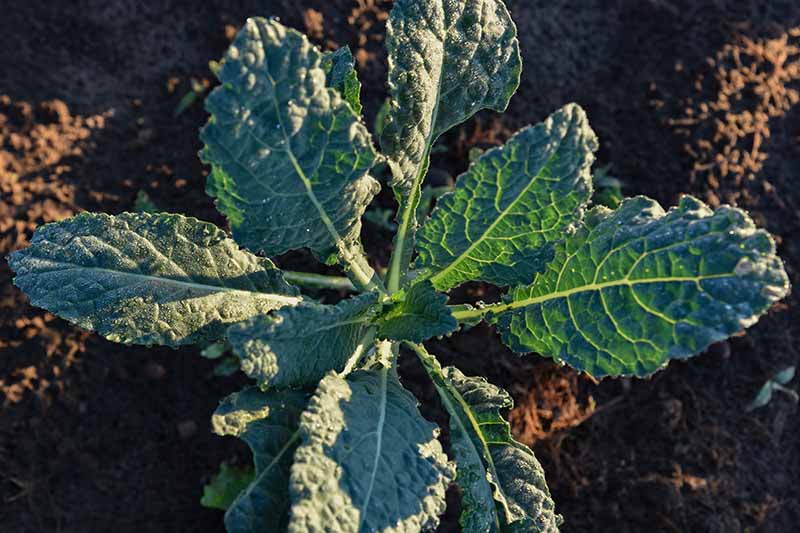
And even if you interplant your kale crop with good companions like I do, you’ll still want to know how much room each of your plants will need so that you can plan your garden accordingly.
Spacing for Baby Greens
If your preferred way to eat kale is in salads, you’ll probably prefer to harvest this veggie in its young stage, as tender baby greens.
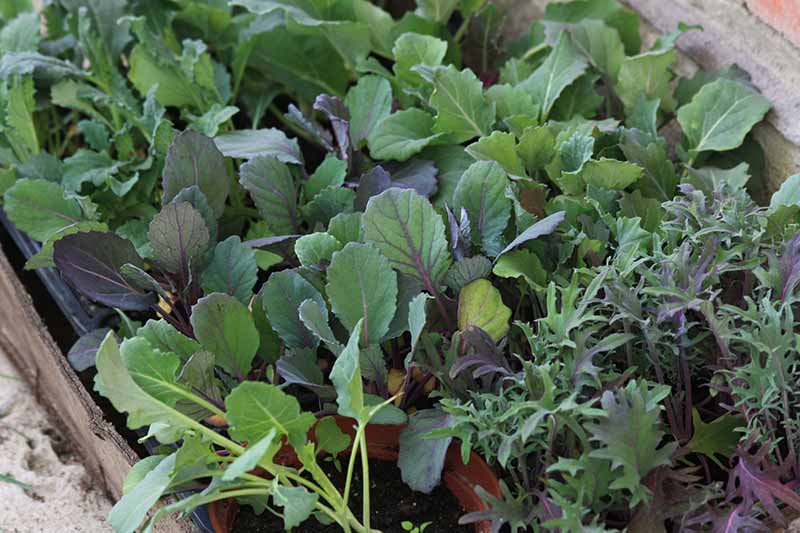
Recommendations for baby greens are the same whether you’re planting in rows, garden beds, or containers.
Baby Greens From Seed
When planting seeds for a harvest of baby greens, start by sowing your seeds approximately one inch apart. See our guide on when to sow kale seeds here.
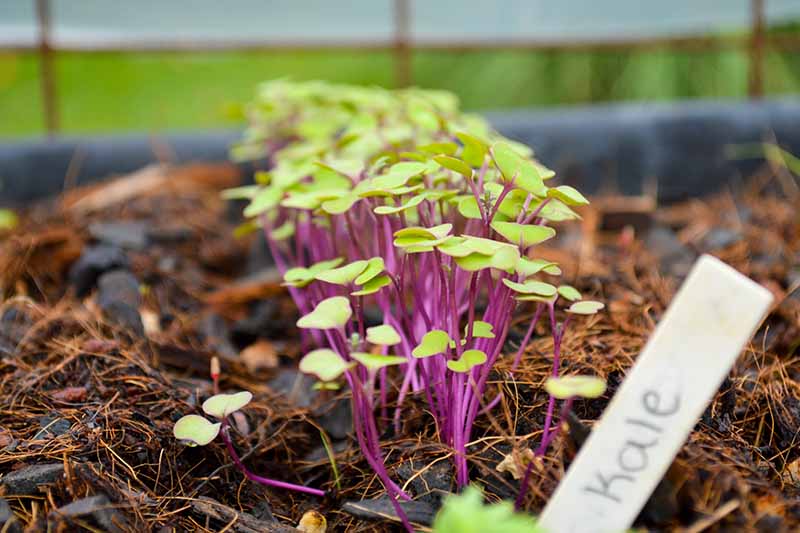
As the seedlings grow, thin them at any stage, using the thinned greens in salads or as a garnish.
You can eat kale seedlings at any size, including when they are teeny tiny microgreens.
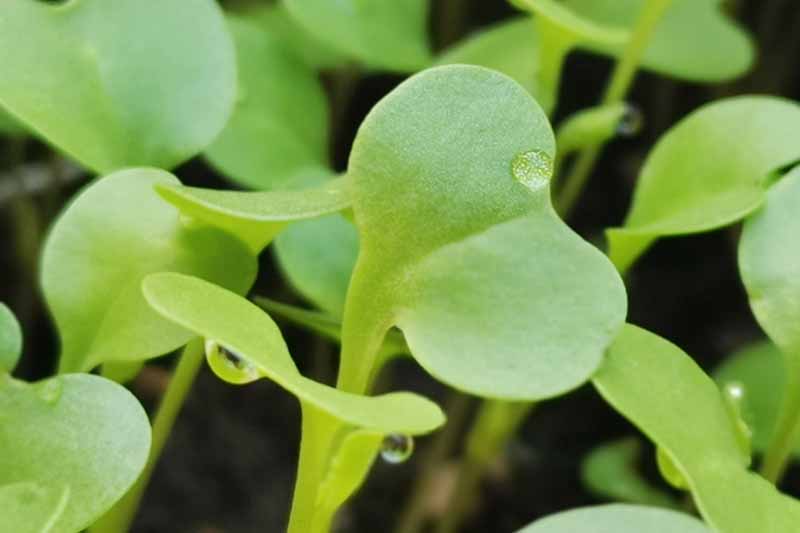
Make sure to refer to our guide if you need to brush up on your harvesting technique for this leafy veggie.
Continue thinning your seedlings throughout the growing season until plants are 4-8 inches apart – our first set of magic numbers.
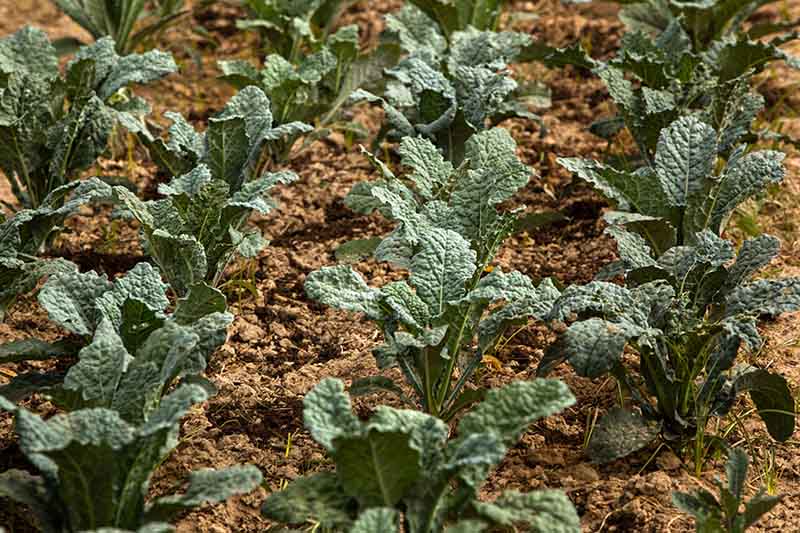
With this method, your constant harvesting of small, tender leaves will prevent the veggies from maturing and getting too big, thus the need for less room.
Baby Greens From Transplants
If you are planting your crop from transplants instead of from seed, you’ll use the same rule of thumb for spacing, only you’ll skip the seeding and thinning part.

Set out transplants 4-8 inches apart. Jill MacKenzie at the University of Minnesota Extension recommends the tighter end of the range, just 4 inches between plants.
Spacing for Full Sized Plants
If you have your culinary sights set on stir fries rather than salads then you’ll likely want to harvest large leaves from full sized plants, getting more produce from each one.
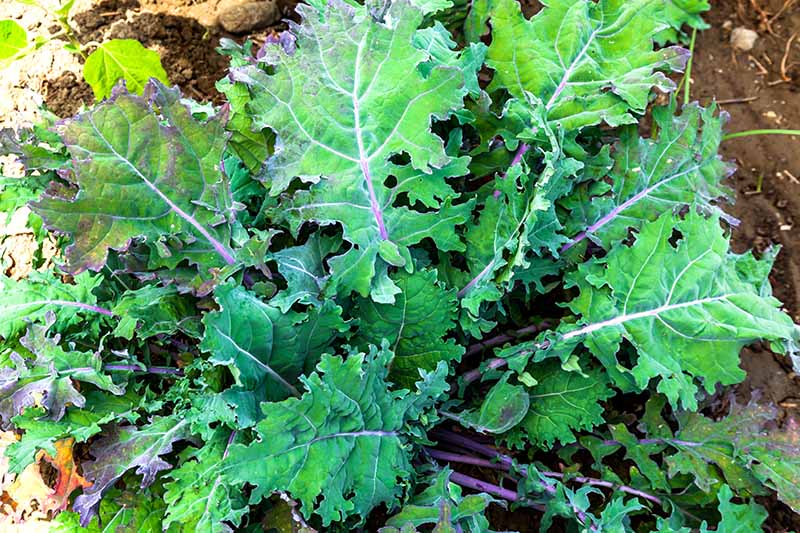
Although spacing for full sized plants is similar for rows, raised beds, and containers, there are some slight differences, which I’ll go over here.
In Rows
When planting this cole crop in rows, thin your seedlings or set out your transplants so that they are 12-18 inches apart, with 2-3 feet between rows.
These are the recommendations of Jeff Schalau, the Agriculture and Natural Resources Agent at the University of Arizona Cooperative Extension in Yavapai County.
After an informal survey of around a dozen other extension offices, this seems to be the general consensus – so this is our next set of magic numbers for spacing between plants: 12-18 inches.
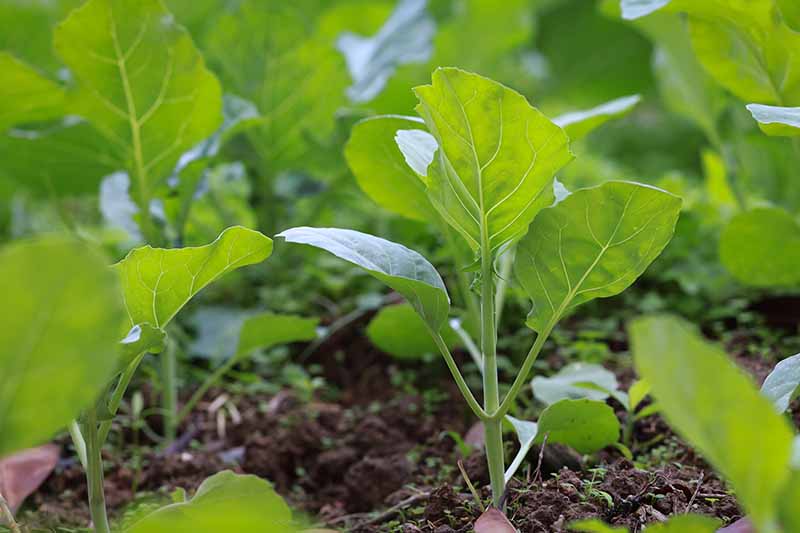
A recommended distance of 12-18 inches between the plants will allow you to harvest and inspect each one easily, as well as making sure it gets plenty of water and sunshine.
It also allows for adequate airflow to help prevent fungal infections.
In Raised Beds
If your preferred gardening method is to grow your veggies in raised beds, you are probably using some form of square foot gardening to guide your planting layout.
In this case, your magic numbers are 12 by 12 inches – the traditional amount of space recommended for kale in square foot gardening.
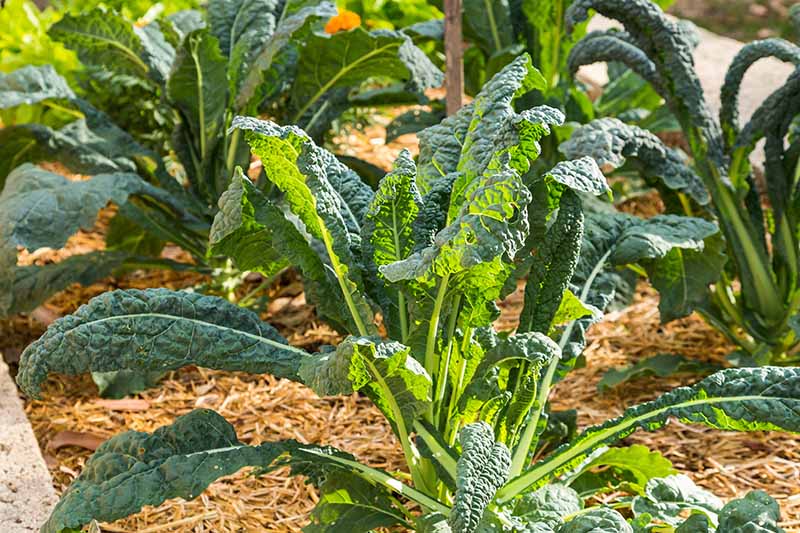
Plant each transplant in the center of one of the squares of your grid.
If you’re starting with seeds instead of transplants, sow several seeds in the center point of your square.
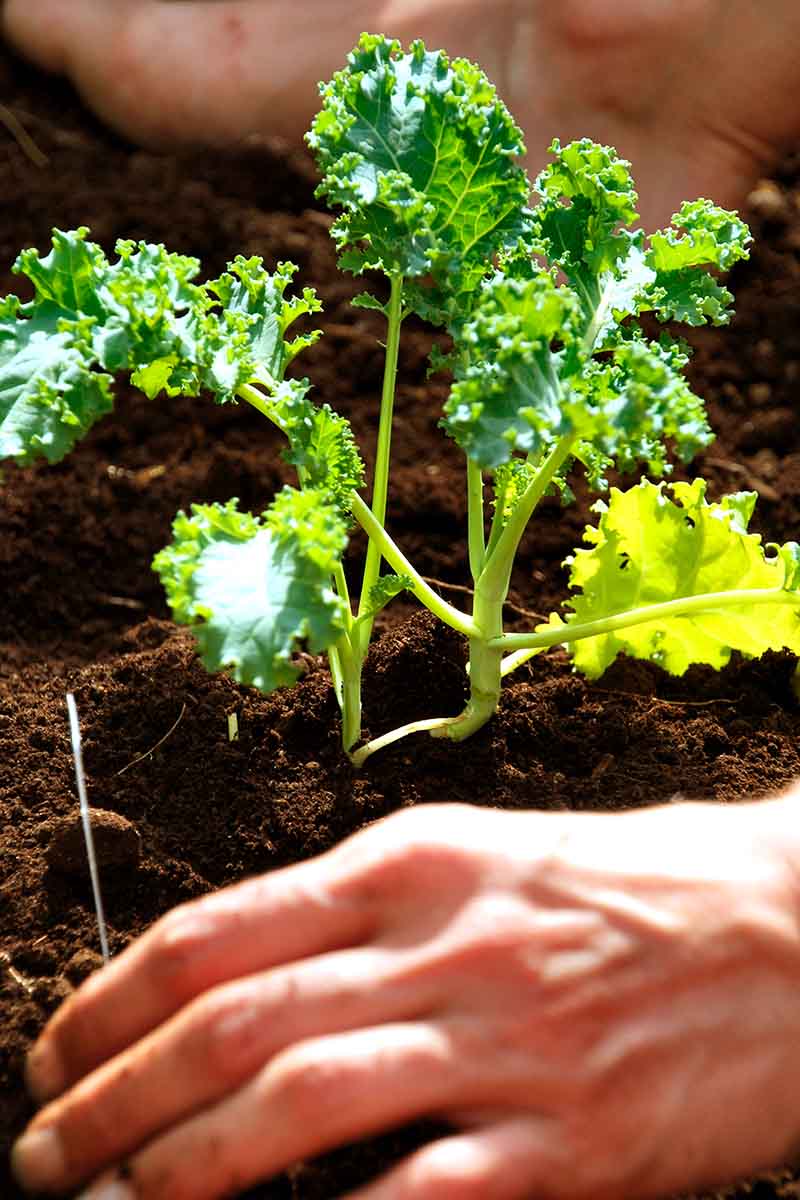
When the seedlings are 4-5 inches tall, snip the weaker seedlings off just above the soil, leaving only the strongest one to grow.
In Containers
Perhaps you are planning to grow this brassica in containers. And what is a container but a much smaller version of a raised bed?
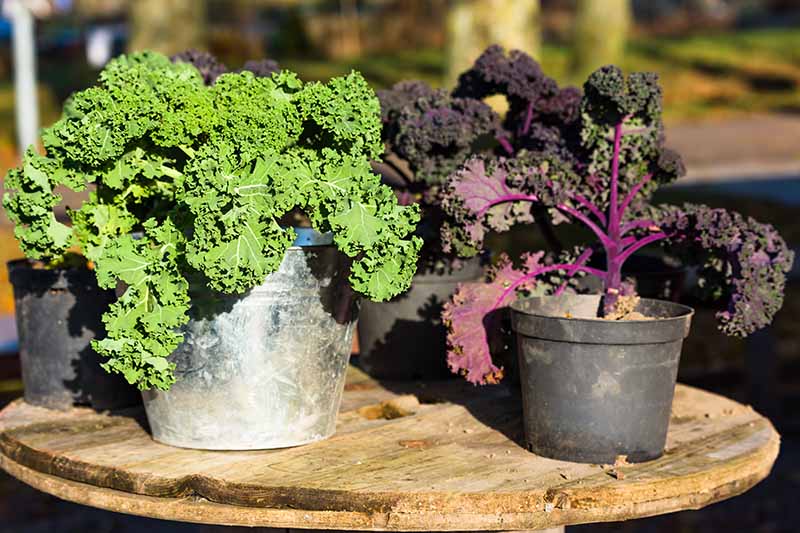
The big difference between growing veggies in containers compared to raised beds is that the soil has a tendency to dry out much more quickly.

Taking this factor into account, don’t plant your kale more densely in a container than you would in a raised bed if you want full-sized plants. (If small ones sound fine to you, though, then refer to the spacing advice in the baby greens section above.)
So what are the magic numbers for growing kale in containers?
For full-sized plants, allow at least one square foot of space each.
Spacing for Different Varieties
The above recommendations are guidelines that work well for average-sized kale.
One cultivar that fits nicely within this average, ‘Nero Toscana,’ a type of Lacinato kale that grows up to 14 inches wide.
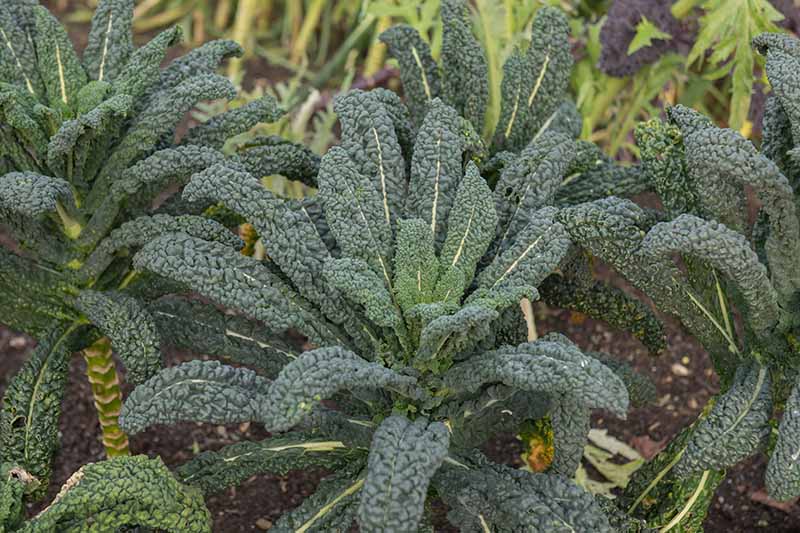
For Lacinato varieties, allowing 18 inches per plant works better, giving each individual plant enough room to reach its full span and still have a little wiggle room.
But – I bet you have been wondering – what if you’re planting a special cultivar that is larger or smaller than average?
Good question!
Larger and Smaller Varieties
When your variety is smaller or larger than average, you’ll need to adjust your magic numbers.
Chinese kale, for example, is a variety that grows on the small side, and only has a spread of about 8 inches.
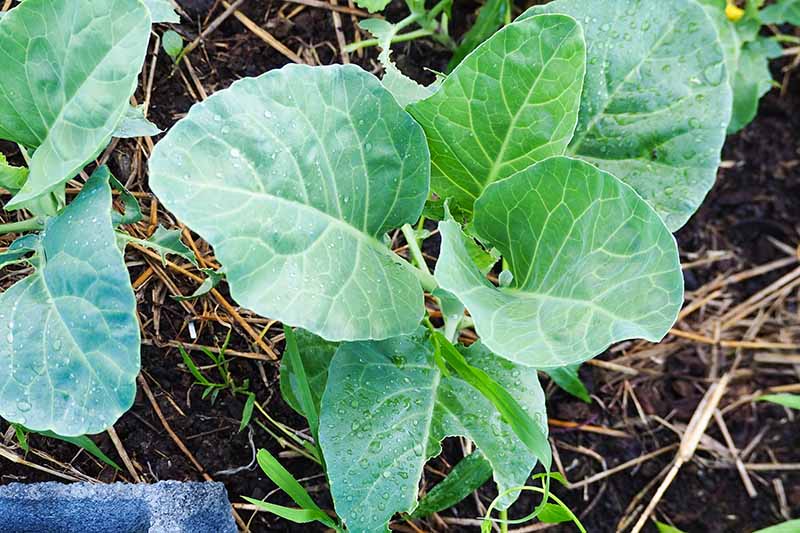
On the other end of the spectrum, some varieties grow much wider than 12-18 inches.
The somewhat misleadingly named ‘Dwarf Blue Curled’ is one such cultivar. Mature plants can grow up to 30 inches wide.
The more common ‘Red Russian’ variety can grow up to 24 inches wide at maturity.

And the rare ‘Thousand Head’ cultivar has leaves that can grow up to 3 feet long, so you might need 6 feet or more between individual plants.
So to be sure your cultivars have enough room, check with the seed company or grower to find out what the expected width of the mature plant is.
Then add a couple of inches of wiggle room to this number, and voila, another set of magic numbers.
Calculating Your Kale Spread
But what do you do if you can’t find how wide the variety you have chosen is supposed to grow? This information is not always supplied on seed packets, unfortunately.

Nevertheless, there is a way you can get a rough estimate of your variety’s expected spread, and you’re going to use your seed packet to do your calculation.
One piece of information that is usually supplied on seed packets is the expected leaf length at maturity.
Since most kale varieties grow from a central stem, you can take the leaf length and multiply it by two to get the approximate spread of your plant.
This isn’t an exact approach since kale varies greatly in terms of how upright the leaves grow – some varieties hold their leaves very upright, like Lacinato types, while curly leaf types tend to sprawl.

So our magic numbers for spacing between kale can also be calculated as leaf length multiplied by 2, plus another 2 inches.
This may leave you with a little extra room between crops, but better to err on the side of a bit of additional space than too much crowding.
Let Your Veggies Space Out
Whether you are growing your kale in containers, raised beds, or rows, for young tender leaves or big thick ones, and no matter what variety you pick, you should now have a solid idea of how far apart to space them.
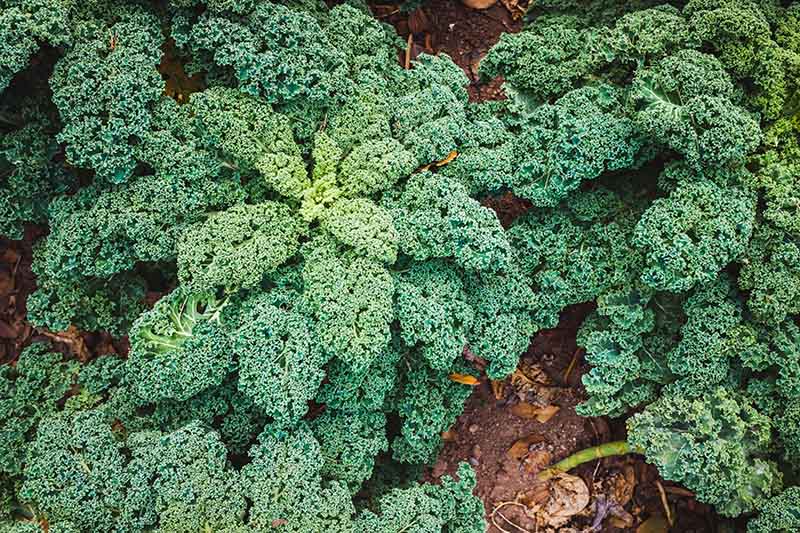
So it’s time to get planting and be well on your way to delicious, nutritious homegrown salads and stir fries.
Did this article help you find your magic numbers, the ones you can use to space out your kale for perfectly placed plants? Let us know in the comments.
For more information about growing kale in your garden, try these guides next:
- Sun Recommendations for Planting Kale
- 6 Best Types of Kale for Cold Climates
- How to Naturally Kill Insects on Kale: The Best Organic Solutions
© Ask the Experts, LLC. ALL RIGHTS RESERVED. See our TOS for more details. Uncredited photos: Shutterstock.
